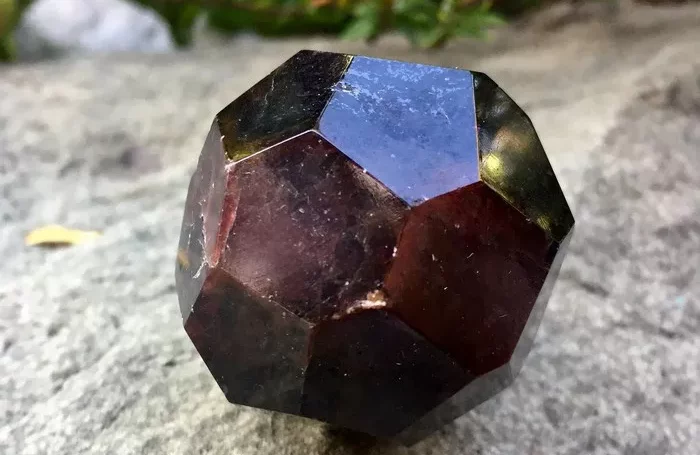Rhodolite stone, also known as rhodolite garnet, is a gemstone variety that falls under the umbrella of the garnet family. This particular type of garnet is distinguished by its captivating pale violet to red hues, making it a highly sought-after gemstone in the jewelry industry. Its unique coloration and durability have contributed to its popularity among gem collectors and jewelers alike. This article aims to provide a detailed introduction to rhodolite stone, covering its characteristics, sources, uses, and the science behind its formation.
Characteristics of Rhodolite Stone
Rhodolite garnet is a silicate mineral composed of calcium, aluminum, silicon, and oxygen, with traces of magnesium and iron that give it its distinctive color. The term “rhodolite” itself refers to a specific variety of garnet that exhibits a blend of pink and red tones, often described as a “raspberry” or “wine” color. This coloration is due to the presence of manganese and iron within the mineral structure.
Physically, rhodolite garnet has a hardness of 6.5 to 7.5 on the Mohs scale, making it a relatively durable gemstone. It has a vitreous to greasy luster and can be found in both transparent and translucent varieties. The crystal structure of rhodolite garnet can vary, ranging from granular to columnar, and it often displays zoning—distinct layers of varying color and composition within the crystal.
Sources of Rhodolite Stone
Rhodolite garnet is found in various locations around the world, with notable deposits in Madagascar, Sri Lanka, Brazil, and the United States. Each source produces rhodolite with slightly different characteristics, such as color saturation and clarity, which can affect its value in the marketplace.
Madagascar is particularly renowned for producing high-quality rhodolite garnet. The gemstones from this region are often highly saturated in color, with deep pink to red hues that are highly sought after. Sri Lanka also produces significant quantities of rhodolite garnet, known for its vibrant colors and excellent clarity. Brazilian rhodolite garnet, on the other hand, tends to be more translucent with lighter color tones.
In the United States, rhodolite garnet can be found in states like Arizona, California, and New Mexico. While these deposits are not as prolific as those in Madagascar or Sri Lanka, they still contribute to the global supply of this gemstone.
Uses of Rhodolite Stone
Due to its durability and beautiful coloration, rhodolite garnet is widely used in jewelry making. It can be found in rings, pendants, earrings, and bracelets, often set in gold, silver, or platinum to enhance its natural beauty. The versatility of rhodolite garnet allows it to be paired with a variety of other gemstones, such as diamonds, sapphires, and emeralds, creating striking and unique jewelry designs.
Beyond jewelry, rhodolite garnet is also used in industrial applications. Its hardness and durability make it suitable for use in abrasive materials, cutting tools, and other applications where wear resistance is required. However, the majority of rhodolite garnet produced is destined for the jewelry market, where its aesthetic qualities are most appreciated.
The Science Behind Rhodolite Stone Formation
The formation of rhodolite garnet involves a complex series of geological processes that occur over millions of years. The process begins with the deposition of volcanic ash and other sedimentary materials in a marine or lacustrine environment. Over time, these sediments are buried and subjected to high temperatures and pressures, causing them to metamorphose into various rock types.
During this metamorphic process, the calcium, aluminum, silicon, and oxygen present in the sediments rearrange themselves into the crystalline structure of garnet. The presence of manganese and iron within the rock matrix results in the formation of rhodolite garnet, with its distinctive pink to red hues.
The zoning patterns observed in rhodolite garnet are a result of variations in the chemical composition and temperature conditions during metamorphism. These variations cause the crystal to grow in distinct layers, each with its own unique color and composition.
Evaluating the Quality of Rhodolite Stone
When evaluating the quality of rhodolite garnet, several factors are taken into consideration. These include color, clarity, cut, and carat weight.
Color is perhaps the most important factor in determining the value of rhodolite garnet. The most desirable colors are those that exhibit a strong, vibrant pink to red hue. Clarity is also important, as rhodolite garnet can contain inclusions such as cracks, fractures, or other mineral phases. Inclusions can affect the transparency and brilliance of the gemstone, thereby reducing its value.
The cut of the rhodolite garnet refers to the way in which the gemstone has been shaped and polished. A well-cut rhodolite garnet will maximize its brilliance and fire, making it more appealing to consumers. Carat weight, of course, refers to the size of the gemstone, and larger rhodolite garnets are generally more valuable than smaller ones.
Caring for Rhodolite Stone Jewelry
To maintain the beauty and value of rhodolite garnet jewelry, proper care and maintenance are essential. Rhodolite garnet is relatively durable, but it can still be scratched or damaged if not handled carefully.
It is recommended to store rhodolite garnet jewelry in a soft cloth or jewelry box to prevent it from being scratched by other jewelry items. When cleaning rhodolite garnet, use a mild soap and water solution, and avoid using harsh chemicals or abrasive cleaners that could damage the gemstone.
It is also important to have rhodolite garnet jewelry professionally inspected and cleaned on a regular basis to ensure that it remains in good condition. A professional jeweler can identify any potential problems, such as loose settings or cracks in the gemstone, and take steps to repair them before they become more serious.
Conclusion
Rhodolite garnet is a beautiful and durable gemstone that has been admired for centuries. Its distinctive pink to red hues and versatility in jewelry design make it a popular choice among consumers. With its rich history and ongoing demand, rhodolite garnet is sure to remain a cherished gemstone for generations to come.
Related topic:


